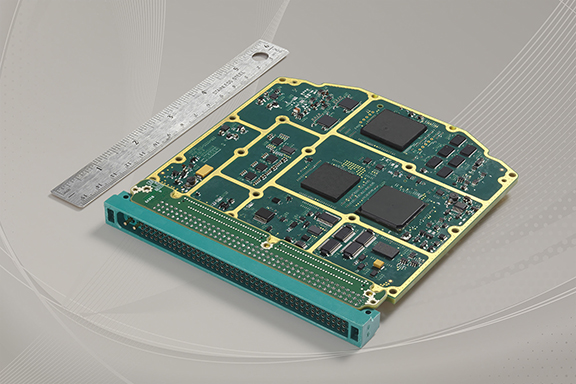The new NavGuide GPS receiver from BAE Systems, an assured-positioning, navigation and timing (A-PNT) device, will serve as a field-installable replacement for the Defense Advanced GPS Receiver (DAGR), providing the warfighter with access to assured M-Code PNT data.
BAE introduced NavGuide this week at ION’s Joint Navigation Conference (JNC) in San Diego, addressing the need for warfighters to have access to the anti-jam and anti-spoofing capabilities that M-Code provides. The device is built for vehicular, handheld, gun-laying and sensor applications.
DAGR is currently used in many different mounted and dismounted platforms, BAE Director of Engineering for Navigation & Sensor Systems Todd Peterson said, so it was important to develop a replacement that’s easy to integrate in current DAGR mounts and accessories. NavGuide installation takes about 30 seconds, so there’s no mission interruption.
NavGuide features a three-inch full-color graphical user interface for dismounted soldiers. Soldiers can learn how to operate the device in about 10 minutes via its built-in onscreen training, with the information the warfighter needs available in one click.
The modernized, portable device was developed based on user feedback, Peterson said, and the “real need across the warfighter community” to have access to M-Code capabilities, as reliable GPS is critical to the warfighter’s mission.
“This brings forward a modernized, portable GPS device that’s drop in and easy to use,” he said. “So far, we’ve received very positive feedback from demonstrations with customers around the ease of use and the graphical user interface. And then when you look under the hood, the capabilities M-Code brings that helps the warfighter stay in the fight is the anti-jam and the anti-spoofing.”
NavGuide, which meets key military environmental requirements, also provides a moving map, situational awareness and 9-line targeting. The compact device has more than 14 hours of battery life and is compatible with existing FRPA and anti-jam electronic units.
Limited production will begin next year and ramp up to full production in 2025, Peterson said. The receiver will be produced at the company’s new 278,000 square foot facility in Cedar Rapids, Iowa, that combines BAE’s engineering and manufacturing teams into one location.
Image courtesy BAE Systems.






